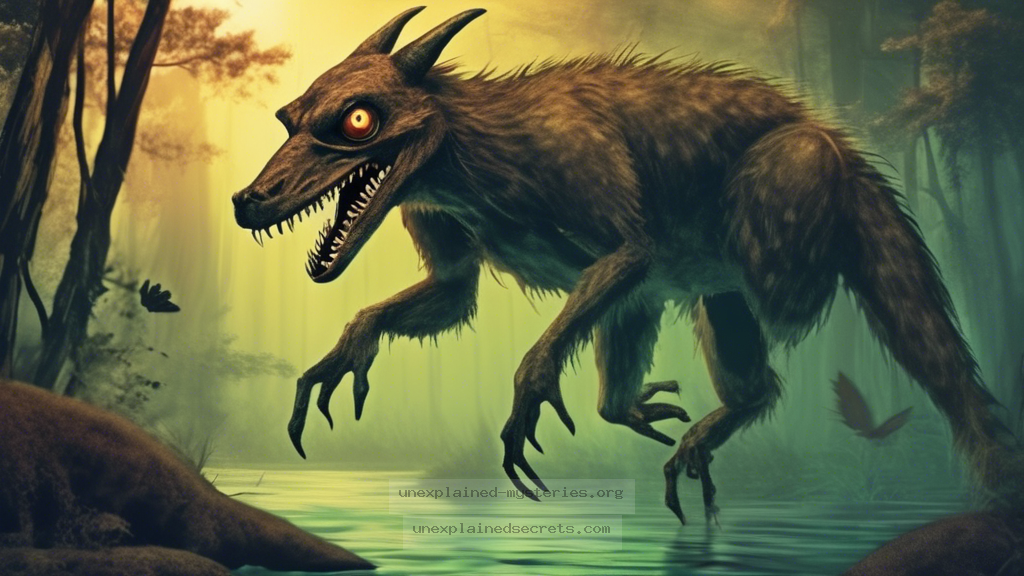What Secrets Lie Behind the Chupacabra: A Deep Dive into the Cryptid Phenomenon?
What Secrets Lie Behind the Chupacabra: A Deep Dive into the Cryptid Phenomenon?
The Chupacabra, a creature shrouded in mystery and fear, has captured the imaginations of many since its supposed emergence in the 1990s. Often described as a hairless, reptilian creature with sharp fangs and glowing eyes, the Chupacabra has become a symbol of the unknown in cryptozoology. But what is the truth behind this elusive creature? Why does its legend persist, and what can we learn from the numerous sightings and claims surrounding it? In this blog post, we will explore the historical context, theories, and ongoing investigations concerning the Chupacabra, providing a comprehensive overview of this enigmatic cryptid.
Historical Context of the Chupacabra
The legend of the Chupacabra first emerged in Puerto Rico in the mid-1990s, following a series of gruesome livestock killings. Farmers reported finding their goats drained of blood, with puncture wounds in their necks. This led to the coining of the term “Chupacabra,” derived from the Spanish words “chupar” (to suck) and “cabra” (goat). The first widely publicized sighting was in 1995, when a woman named Madelyne Tolentino described encountering a creature that matched the now-iconic description. As the legend spread, so did reports of Chupacabra sightings across Latin America and even into the United States, leading to a phenomenon that would intrigue cryptozoologists and the general public alike.
Core Concepts and Theories
Understanding the Chupacabra requires delving into various theories surrounding its origin and existence. Some researchers believe it to be a product of folklore, while others suggest it may be an undiscovered species or a mutation of known animals.
- Folkloric Origins: Many experts argue that the Chupacabra is a modern myth, a manifestation of cultural fears and anxieties related to livestock farming and the unknown.
- Biological Explanations: Some theories propose that the Chupacabra could be a misidentified animal, such as a coyote suffering from mange, a condition that causes fur loss and gives the creature a more sinister appearance.
- Extraterrestrial Influence: A more fringe theory suggests that the Chupacabra could be an extraterrestrial being, given its unusual characteristics and reported abilities.
Real-World Examples of Sightings
Sightings of the Chupacabra have been reported in various locations, each adding to the lore surrounding the creature. Here are a few notable cases:
| Date | Location | Description |
|---|---|---|
| 1995 | Puerto Rico | First reported sightings, involving livestock killings. |
| 2000 | Texas, USA | A rash of goat killings leads locals to suspect a Chupacabra. |
| 2014 | Miami, Florida | Residents report seeing a creature resembling the Chupacabra in their backyards. |
| 2019 | Chile | Farmers find livestock drained of blood, reigniting Chupacabra fears. |
Practical Implications of the Chupacabra Legend
The Chupacabra has implications that extend beyond mere folklore. The ongoing fascination with this creature can be seen in various aspects of culture, including media representation, tourism, and agricultural practices. Farmers in regions plagued by Chupacabra sightings often invest in protective measures for their livestock, leading to heightened security and changes in farming practices. Additionally, the Chupacabra has become a popular subject in films, television shows, and literature, highlighting its role as a cultural icon.
💡 Key Insight: The Chupacabra’s impact on local economies, especially in rural areas, shows how cryptids can shape community identities and practices.
Alternative Perspectives on the Chupacabra Phenomenon
While many embrace the idea of the Chupacabra as a legitimate cryptid, others approach the phenomenon with skepticism. Some researchers argue that the sightings can be attributed to psychological factors, such as collective hysteria or the power of suggestion. The concept of “misidentification” also plays a critical role; animals such as coyotes, dogs, or even raccoons could easily be mistaken for the Chupacabra, especially in the dark or in a state of distress.
Common Misconceptions and Clarifications
Several misconceptions surround the Chupacabra that can cloud understanding:
- Misconception: The Chupacabra is universally agreed upon to look a certain way.
Clarification: Descriptions vary widely, with some reports indicating a reptilian appearance while others describe it as more canine. - Misconception: The Chupacabra exclusively targets goats.
Clarification: Reports include various livestock, including chickens, sheep, and even pets. - Misconception: All sightings are credible.
Clarification: Many reports lack photographic evidence or are rooted in hoaxes.
Best Practices for Investigating Cryptids
For those interested in researching the Chupacabra or other cryptids, certain best practices can enhance the investigation:
- Documentation: Record all sightings and evidence thoroughly, including time, location, and witness statements.
- Collaboration: Work with local researchers and cryptozoologists to gather insights and share findings.
- Scientific Approach: Utilize scientific methods to analyze evidence, such as tissue samples from reported sightings.
- Community Engagement: Engage with local communities to understand their experiences and beliefs regarding the Chupacabra.
✅ Tip: Always approach investigations with an open mind and a healthy dose of skepticism; not all reports will lead to concrete evidence.
Future Developments and Ongoing Research
The exploration of the Chupacabra continues, with new technologies and methodologies emerging in the field of cryptozoology. Genetic analysis, for instance, is becoming increasingly important in verifying claims of sightings. Advances in wildlife tracking and camera technology may also play a vital role in capturing evidence of the Chupacabra or its biological counterparts. Researchers are also focusing on the sociocultural aspects of the Chupacabra legend, examining how it reflects societal fears and beliefs in the modern world.
Conclusion: The Enduring Mystery of the Chupacabra
The Chupacabra remains a captivating subject in cryptozoology, embodying the tension between myth and reality. From its historical roots in Puerto Rico to its widespread sightings across the Americas, the legend continues to evolve. While skeptics question its existence, many enthusiasts remain dedicated to uncovering the truth behind this mysterious creature. As research advances, we may yet learn more about the origins and implications of the Chupacabra, ensuring that its legend persists in both folklore and scientific inquiry.
Other Articles
Recent Posts
- What Happened to Flight MH370? The Conspiracy Theories That Still Haunt Us
- What Secrets Lurk Within the Walls of the Infamous Trans-Allegheny Lunatic Asylum?
- What Evidence Supports the Existence of Bigfoot in the Pacific Northwest?
- What Happened to the Indus Valley Civilization? Unraveling the Mysteries of Ancient Urban Life
- Can Telepathy Be Scientifically Proven Through Laboratory Evidence?







